For quite some time now I want to make a red-and-white quilt. I’ve collected a lot of red and white quilt fabrics, different hues of red and multiple whites. I think I have enough now to start, but one horror scenario comes to mind: bleeding!
What if my reds bleed onto my whites?
What if I need to was out markings and the red dyes will float and make stains on my white fabrics?
To prevent this, to be certain this won’t happen, I have to pre-wash the reds.
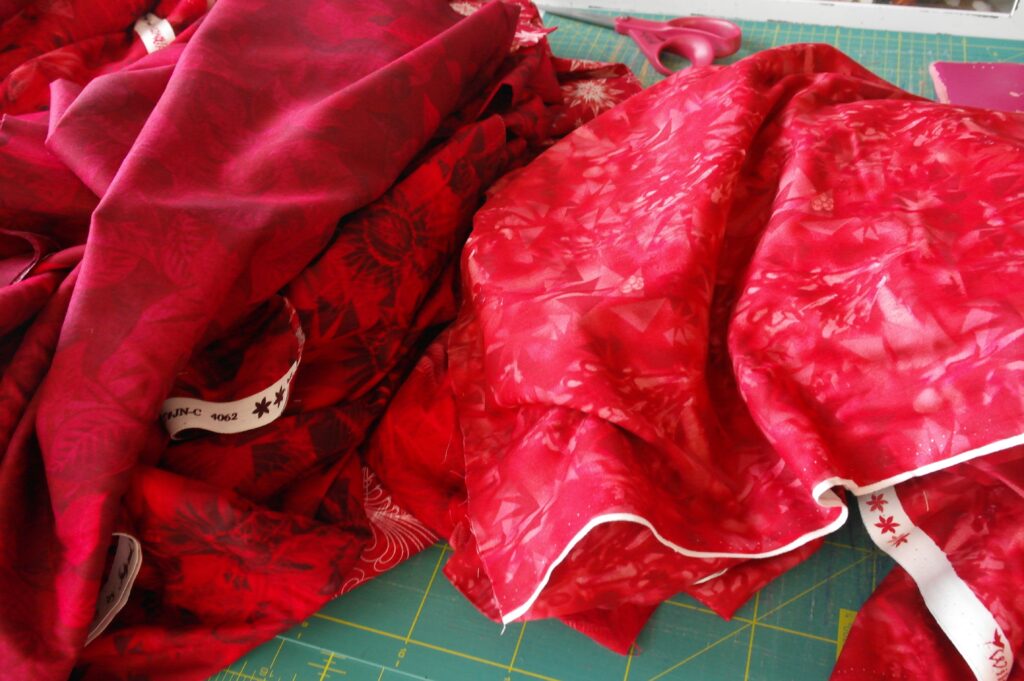
Nowadays quilt fabrics are made, using lots of chemicals to prevent the bleeding, and making the fabrics soft and beautiful, but since I have bought my fabrics with different shops and will use fabrics from my stash (which comes from a lifelong collection) I am not sure in which year these fabrics are made, and some are missing the essential information in the selvage. So… to be on the safe side, pre-wash then? Let’s make a list with pros and cons.
Pros pre-wash
- Certainty that my red quilt fabrics will not bleed onto the white fabrics, which will be used in the same quilt for contrast. Not even when using a damp cloth to remove markings.
- The quilt can be washed after quilting, without worrying the red fabrics will bleed. Also when making a stain, and removing that, you don’t have to worry about bleeding.
- The fabrics are pre-shrunk: washing the quilt won’t shrink the fabrics, and therefore the quilt itself, providing a ‘safe’ washing program will be used. To be sure the white fabrics won’t shrink either, they have to be pre-washed too, just for that purpose.
- Making a baby quilt or toddler quilt, the chemicals which are used with production of the quilt fabric, are removed. Babies and toddlers will suck on quilts, so pre-washing the fabrics will be much safer for them.
Cons pre-wash
- The protection of the fabrics – chemicals etc. used by the manufacturer while making the fabric – are removed. That means quilt fabrics are no longer protected to stains and dust. Sometimes part of the protection is still there, but mostly it is washed away.
- All sides of large pieces of fabric should be locked to prevent fraying, while washing them in the washing machine. Even with small pieces washed by hand, something has to be done to prevent fraying, otherwise the sides have to be trimmed of, before using the scraps and remnants in a quilt.
- Cotton quilt fabrics will shrink: while making quilt fabrics, cotton threads are stretched to be sure they will give the fabrics the right tension, and being able to apply dyes and chemicals. When shrinking cotton fabrics, they will wrinkle, so they will have to be ironed after pre-wash, preferable with a steam iron.
- Large pieces of fabrics (yards or meters in one piece) should be locked before pre-wash, to prevent fraying these ‘open’ sides.
- Fabrics that will be put in the dryer, will shrink even more: best is to dry them on low heat, but they have to be pressed. A lot of work!
The bleeding-test.
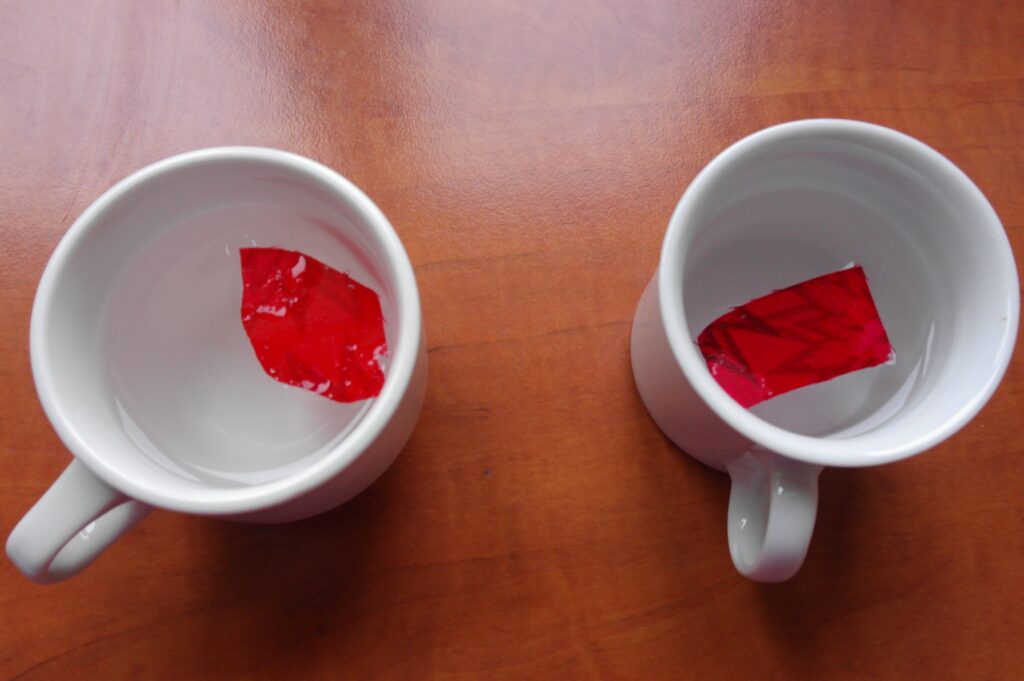
Before doing all the preparations for pre-wash, I will test swatches of red fabrics first. Using a white cup, filled with clear water, I will place a small piece in that water for about 15 minutes to half an hour (one piece of fabric per cup). If the water is still clear after that, the fabric is safe. If the water is not clear anymore, I will have to pre-wash that fabric.
The water was still clear after even half an hour (with the picture above it seems like the left fabric bled, but that’s just the reflection of the fed fabric). Not having to pre-wash would save me a lot of time, but is this test conclusive? And will that mean the reds I have rested will NEVER bleed?

Tested them again, but used boiling water this time: now the fabrics have bled, some a bit, others a lot. Yes, I know, I will never wash my quilt that hot, but still I wanted to be sure all fabrics are stable. If I wanted to use these fabrics for a baby quilt or for a toddler’s quilt – which will be washed a lot, I had to pre-wash them to remove chemicals. So now I know that most reds are ok, but some of them are not.
So…. that means I will pre-wash ALL fabrics. With the very large pieces – some of them are 2 or 3 yards/meters in size – I want to do this with my washing machine.
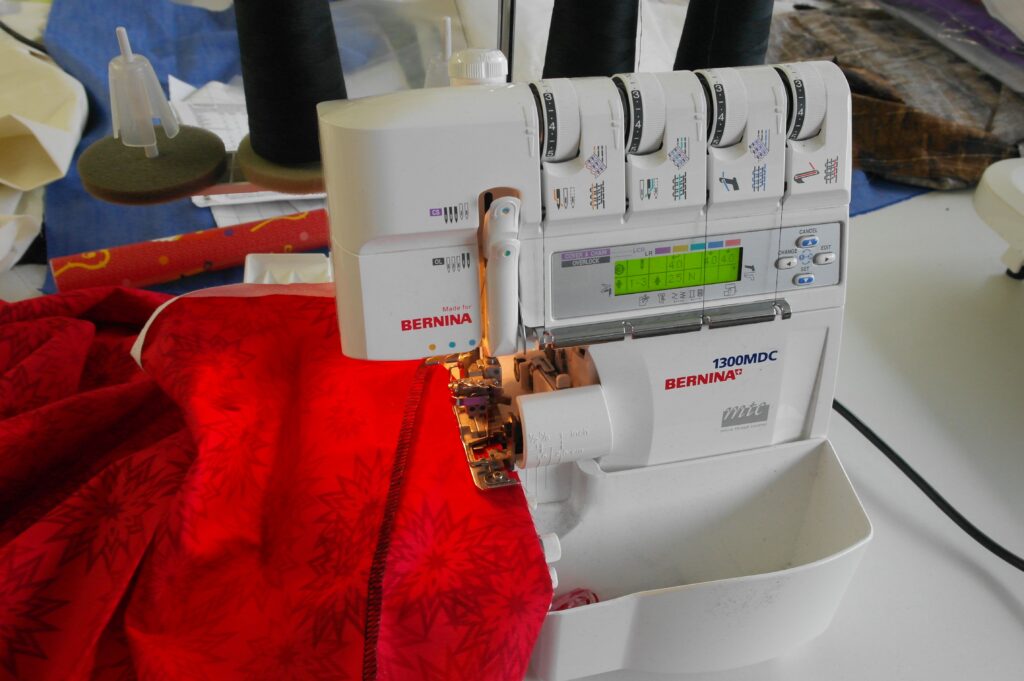
But first I need to lock the edges. The selvages are ok, but the raw edges of top and bottom of the fabrics have to be prevented from fraying: when pre-washing by hand, you can do it carefully, but when pre-washing by machine, fabrics will tumble and tumble, and fray a lot!
I will use my BERNINA Overlock 1300MDC: black lock yarn was still om my machine from the last job, which is no problem, because these stitches will be cut away when using the fabrics for patchwork.
Machine ready and go: lots of raw edges are blocked this way, going fast. That’s what I like about my lock machine: it cuts uneven parts while making the stitches. Another advantage is the length of the thread on cones: 3000m, so I don’t have to worry running out of thread, which happens with bobbins a lot!
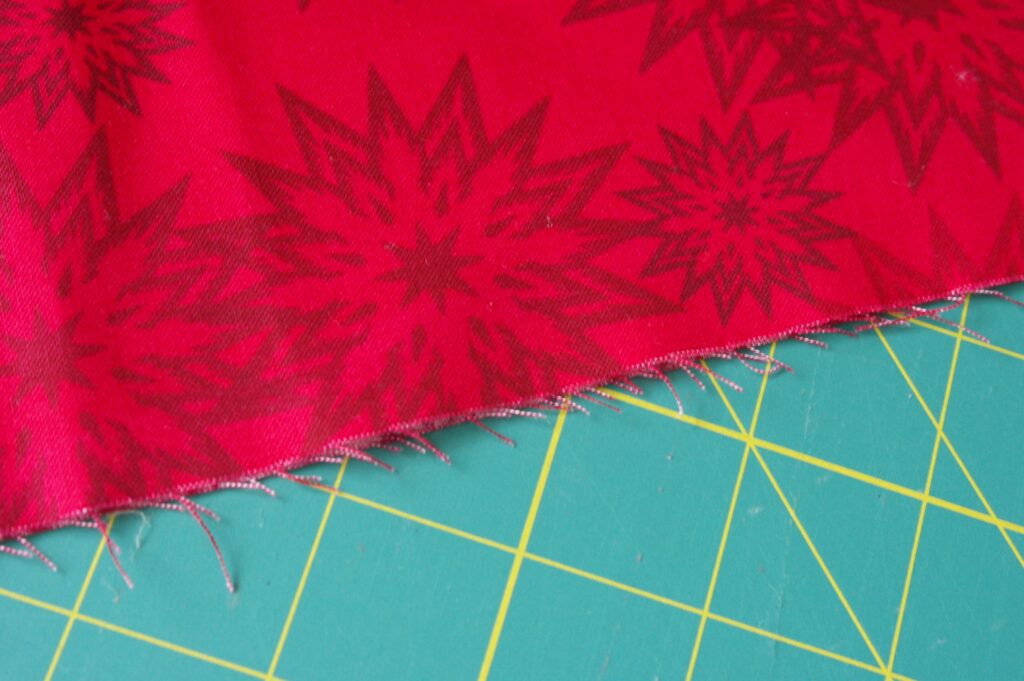
This is the raw edge of a red quilt fabric, before pre-washing: it frays, which will only get worse if not blocked.
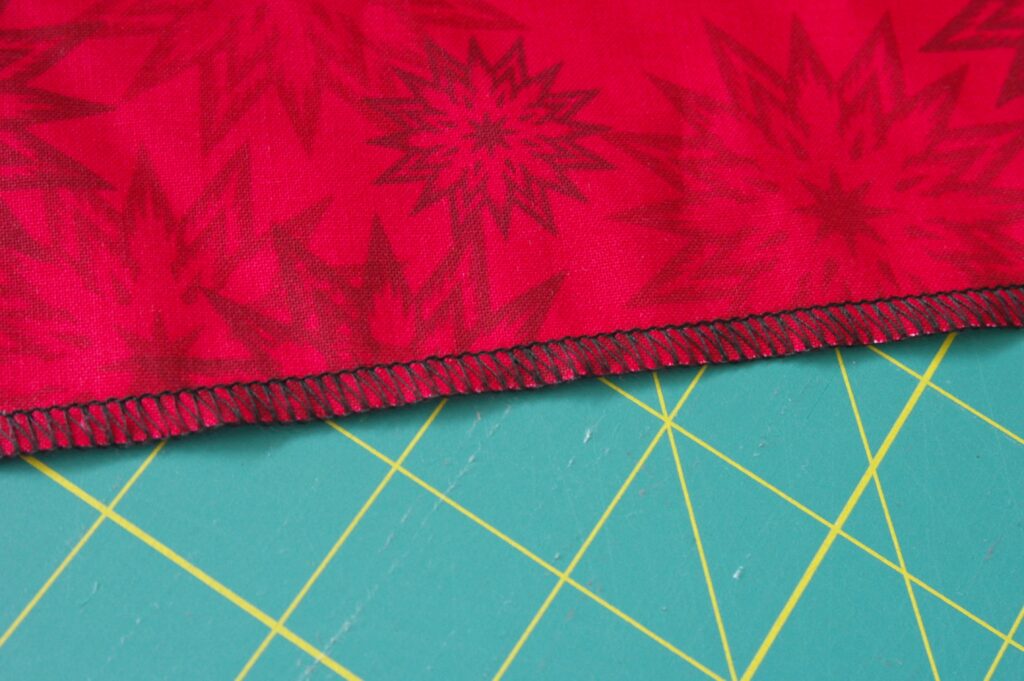
And this is how the raw edges are blocked: now I can pre-wash them without having to worry about frays making a mess in the washing machine. It will take some time: washing and drying, but good preparation is essential to make a beautiful and long lasting quilt.
Happy Stitching!
Sylvia Kaptein
Sylvia’s Art Quilts Studio
Pre-washing is sometimes a matter of personal choice: if you don’t want to do al the work, you don’t have to, but check your swatches before cutting for patchwork or appliqué, just to be sure.
 BERNINA Corporate Blog -
BERNINA Corporate Blog -
Thanks for the informative article & the illustrations are great.
You’re welcome, Yvonne. Hope it helps
I bought some red sheeting from j Lewis to back a quilt. I pre washed it 3 x with a colour catcher (-as well as salt the first time in attempt to fix it) but each time the colour catcher came out v pink indicating dye not fast. Is this the case and is there anything can be done about it as obviously with all the effort of making this double bed wuolt which I may wash don’t want the backing to leach into the other quite light coloured fabric. Thanks
When a fabric keeps bleeding, not matter what you’ve tried to block it, don’t use it in a quilt. The risk of it bleeding again, using it as a backing for your quilt, will stain the front too. Better use a quilting fabric which is ment for backing (extra wide), and use a neutral color.
Sheeting is not ment for making quilts: the fabric itself will shrink a lot more than quilt fabrics, which can cause more problems after washing too. But it all depends on what’s available for you, and how much preparatiions you will have to take before actually making the quilt.
Hope this makes sense.